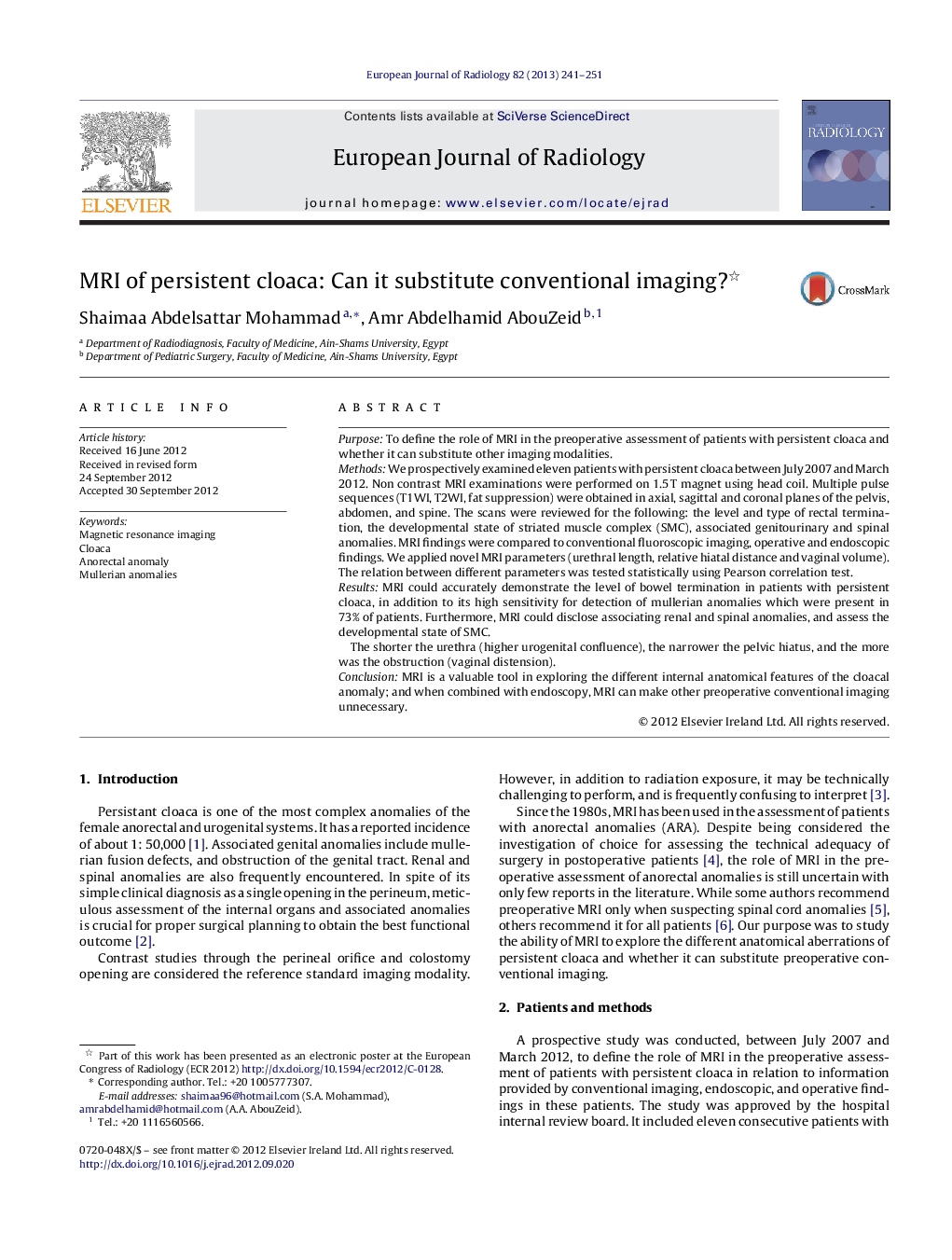| Article ID | Journal | Published Year | Pages | File Type |
|---|---|---|---|---|
| 4225535 | European Journal of Radiology | 2013 | 11 Pages |
PurposeTo define the role of MRI in the preoperative assessment of patients with persistent cloaca and whether it can substitute other imaging modalities.MethodsWe prospectively examined eleven patients with persistent cloaca between July 2007 and March 2012. Non contrast MRI examinations were performed on 1.5 T magnet using head coil. Multiple pulse sequences (T1WI, T2WI, fat suppression) were obtained in axial, sagittal and coronal planes of the pelvis, abdomen, and spine. The scans were reviewed for the following: the level and type of rectal termination, the developmental state of striated muscle complex (SMC), associated genitourinary and spinal anomalies. MRI findings were compared to conventional fluoroscopic imaging, operative and endoscopic findings. We applied novel MRI parameters (urethral length, relative hiatal distance and vaginal volume). The relation between different parameters was tested statistically using Pearson correlation test.ResultsMRI could accurately demonstrate the level of bowel termination in patients with persistent cloaca, in addition to its high sensitivity for detection of mullerian anomalies which were present in 73% of patients. Furthermore, MRI could disclose associating renal and spinal anomalies, and assess the developmental state of SMC.The shorter the urethra (higher urogenital confluence), the narrower the pelvic hiatus, and the more was the obstruction (vaginal distension).ConclusionMRI is a valuable tool in exploring the different internal anatomical features of the cloacal anomaly; and when combined with endoscopy, MRI can make other preoperative conventional imaging unnecessary.
